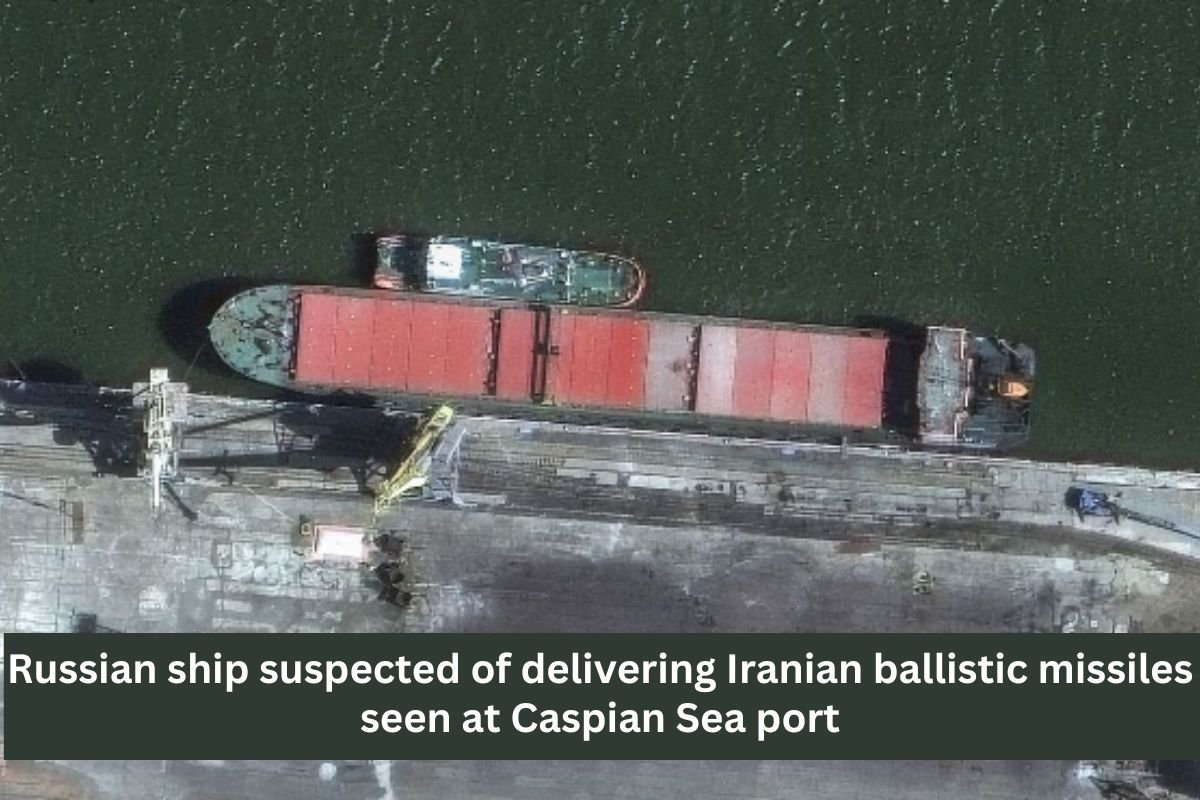CNN was given satellite images of a Russian cargo ship in the Caspian Sea a week ago. The ship is thought to be carrying Iranian ballistic weapons for Moscow’s war against Ukraine.
Satellite pictures taken on September 4 at Port Olya in Astrakhan helped Maxar Technologies figure out which ship it was. It was the Port Olya 3. Tracking information for the ship shows that it was in the Iranian port of Amirabad on August 29. After that, it turned off its beacon.
The US Treasury said on Tuesday that the Russian Ministry of Defense had “brought CRBMs from Iran to Russia on the ship Port Olya-3.”
The Treasury said, “As of early September 2024, Russia received the first shipment of CBRMs (close-range ballistic missiles) from Iran.” At the same time, it put sanctions on the Port Olya 3, other ships, and several Iranian people.
CNN reported over the weekend that Iran had recently sent short-range ballistic missiles to Russia to use in the war against Ukraine. This is a big step up in Iran’s backing for Russia.
Also see :- Indonesia puts moratorium on new Bali hotels amid overtourism fears
Both Russia and Iran’s military ties have grown stronger since February 2022, when Russia invaded Ukraine. US sources say that Iran built a drone factory in Russia and sent thousands of “Shahed” attack drones to Russia.
US Secretary of State Antony Blinken said in London on Tuesday that the US thought the Russian military had gotten shipments of Iranian Fatah-360 ballistic missiles and “will likely use them within weeks in Ukraine against Ukrainians.” The satellite images came out the next day.
Up to 75 miles (120 kilometers) away, the Fateh-360 can move up to 330 pounds (150 kilograms) of items. Even though it doesn’t carry as much as many Russian bombs, it could be used to hit Ukrainian frontline areas from a long way away, and because it’s a ballistic missile, it would be much harder to stop.
It is thought by the Institute for the Study of War (ISW) that “in the coming months, Russian forces will likely use the Iranian-supplied missiles to target Ukrainian energy, military, and civilian infrastructure.”
Seyed Abbas Araghchi, the foreign minister of Iran, denied that his country had sent ballistic missiles to Russia. He wrote on X, “Once again, the US and E3 (UK, France, and Germany) act on bad intelligence and bad logic; Iran has NOT sent ballistic missiles to Russia.” For good.
This week, after hearing that ballistic weapons were being sent to Russia, the Ukrainian Foreign Ministry called Shahriar Amouzegar, who is the Iranian charge d’affaires. If the claims were true, Amouzegar was told that relations between Ukraine and Iran would be “devastating and irreparable.”
When CNN called Ukrainian officials on Wednesday, they refused to say anything else. The ISW, a think tank in Washington, D.C., said that Iran has moved weapons from the Caspian Sea towns of Amirabad and Anzali to Astrakhan in the past.
It is known that the Port Olya 3 has been to the two Iranian ports twelve times this year. It had left the Russian port for another trip by September 6. Blinken said on Tuesday that the US had “privately warned Iran that taking this step would be a dramatic escalation.”
He said that dozens of Russian soldiers had been trained in Iran to use the Fateh-360. This “allows Russia to use more of its arsenal for targets that are farther from the front line while dedicating the new missiles it’s receiving from Iran to targets that are closer to home.”
The US told CNN that talks between Russia and Iran to buy close-range ballistic missiles started in September of last year, when Sergei Shoigu, who was Russia’s defense minister at the time, went to Iran to see the Ababil close-range ballistic missile systems owned by the Islamic Revolutionary Guard Corps.
“On the other hand, Russia gives Iran the technology it wants.” The two sides can talk to each other about everything, from nuclear problems to some space news, Blinken said Tuesday.
It is still not clear if Iran’s delivery of ballistic missiles that can be fired from inside Russia at targets in Ukraine will convince the US and its European partners to let the Ukrainians use their missiles against more targets in Russia.
Ukraine has sometimes used HIMARS missiles made in the US against targets about 60 to 80 kilometers inside Russia. Volodymyr Zelensky, the president of Ukraine, has often asked Kyiv’s friends for more freedom to use Western missiles against targets inside Russia.
The subject is expected to come up when US President Joe Biden and UK Prime Minister Keir Starmer meet in Washington on Friday.











